The music nerd cultural happening – modular pilgrimage is back, and with it… way too much gear to wrap your head around. Here are the not-to-miss picks and of course the exhaustive CDM monster guide.
Best modular
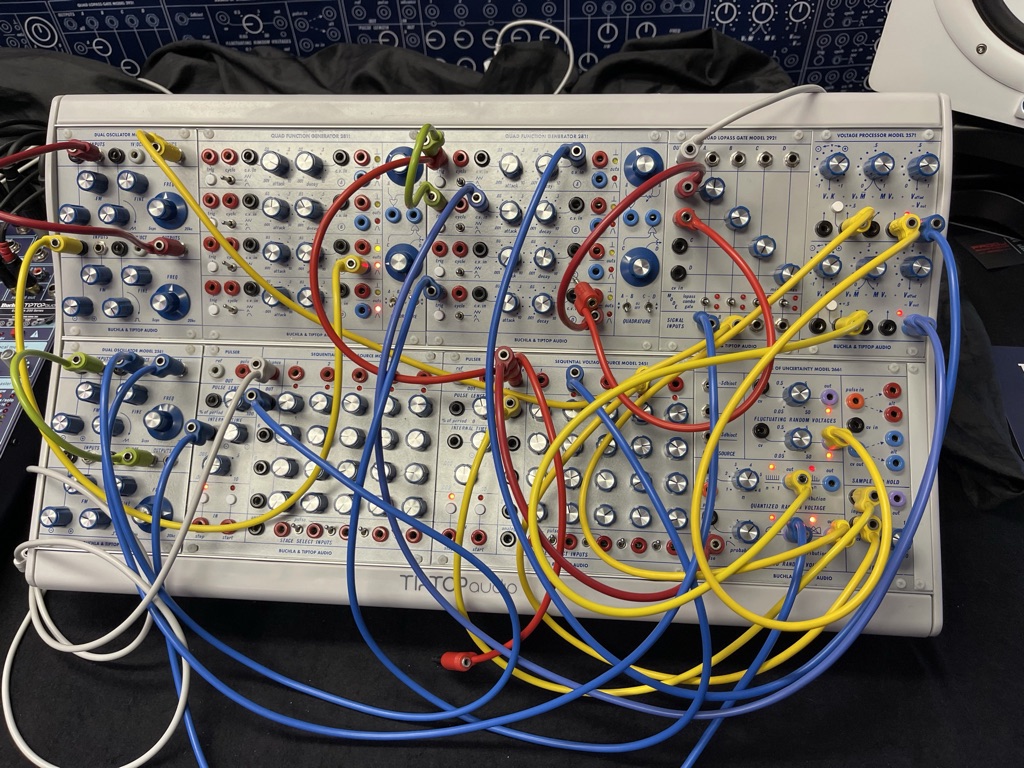
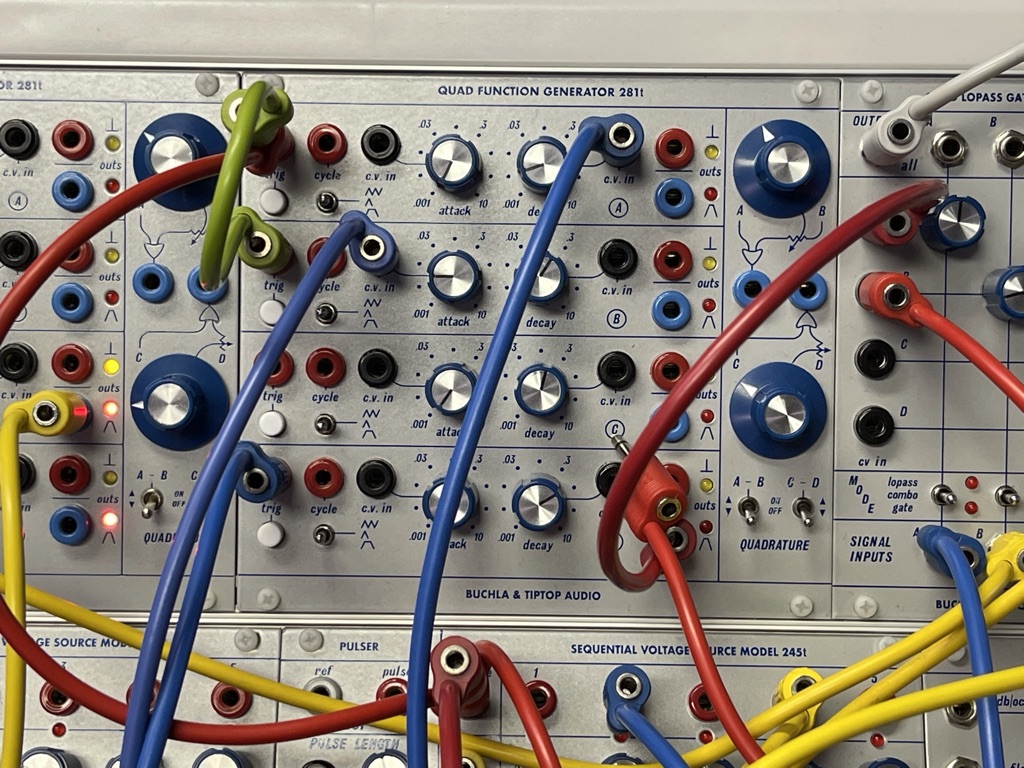
Tiptop Audio will make Buchla modules that are authentic – but also affordable. Buchla’s modules have always inspired passion among musicians for their unique approach to exploring sound, back to the 100 series debut in the 1960s. But the official Buchla recreations are pricey – I literally once had a company rep tell me, yeah, dentists are frequent customers. That means it’s great to see Tiptop’s authentic, official, thoughtful modules – finally at some prices that are within reach of more musicians. Check the full list with a lot marked “TBD,” but at least see some recognizable modules for less than $200. Buchla also updated their Music Easel at the show, for US$3999.
Tiptop are also doing some irresistible effects. Even more accessible – thanks to a shared digital platform – are Tiptop’s own effects. The ModFX and FSU are friendly, not arcane, and do stuff you actually want. That’s chorus/flanger/filter on ModFX (with a lot of extras and additional filters), and a bunch of time modulation on FSU, including ring mod, frequency shifting, granular effects, and even tape-style overdubs. There are a bunch of additional modes and twists in both, reminiscent of Mutable’s modules as well as, frankly, a lot of what you now only see in software.
I know a lot of people are deep into the Eurorack addiction, but I like seeing things that are even more compact than what would be in desktop sets – stuff that’s flexible enough you could imagine it in a tiny suitcase rig. And this fits the bill. The ModFX gives you essentials; the FSU gives you the exotic stuff.
Doepfer proves again it’s a great first-stop shop. Doepfer had the coolest booth – a relaxed bungalow full of playable stations where you could relax and make sound, bestrewn with TV sets powered by artist Alexandra Maciá’s CCTV videos. Eschewing ostentatious display of larger brands, it was the place you might actually explore some sounds. But they also had – as always – some of the most practical additions to the Eurorack scene they originated.
So you get five new modules: an updated Frequency Shifter, a 3-way crossfader, a four-way random voltage trigger, and a slimline module that converts light to voltage, and a cute little passive module with some rotaries. Plus they’re doing a case with a keyboard. Unlike other attempts at that, they stuck a Fatar keybed in the lid – the most space-efficient solution I’ve seen yet. Everything is clearly laid out on Doepfer’s site; Sonic State did a deep dive:
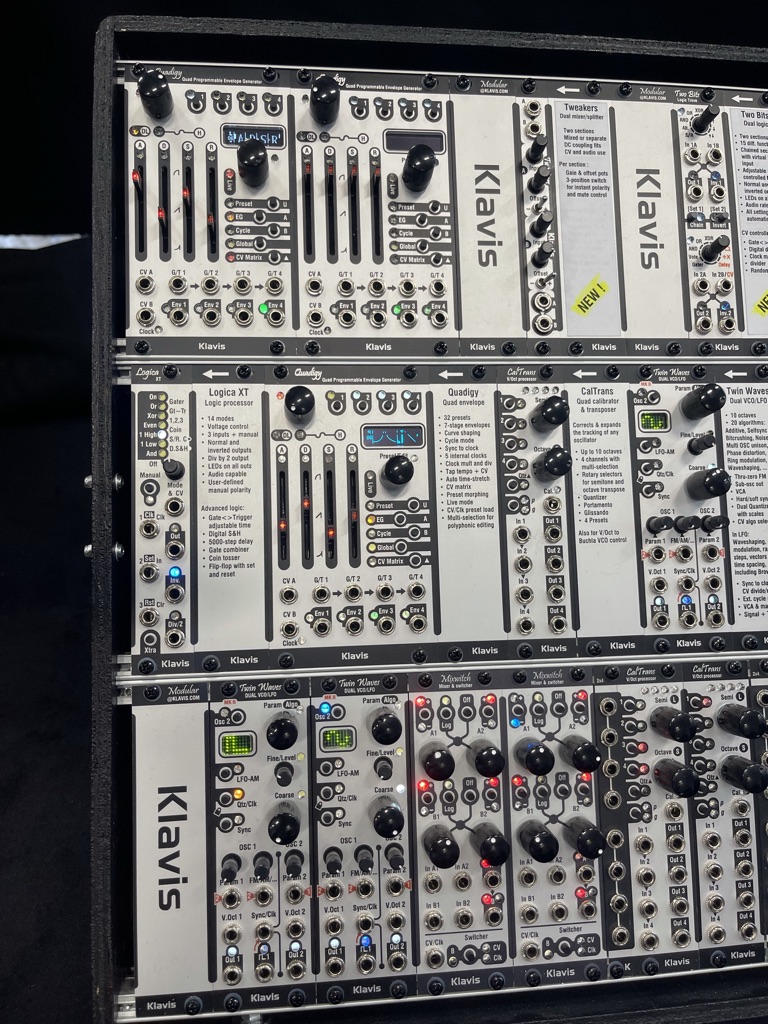
Everybody loves Klavis. One of the comments you hear most often at Superbooth is, well – there sure are a lot of ways of doing, say, envelope generators. Klavis’ stuff was a big success with a lot of artists I talked to, though, in actually being able to do clever stuff with signal. This year there isn’t a whole lot new, but it’s useful – Two Bits and Tweakers just handle logic in smart ways.
But it’s not the new gear that is significant so much as I could find artists I know easily just by keeping an eye on the booth.
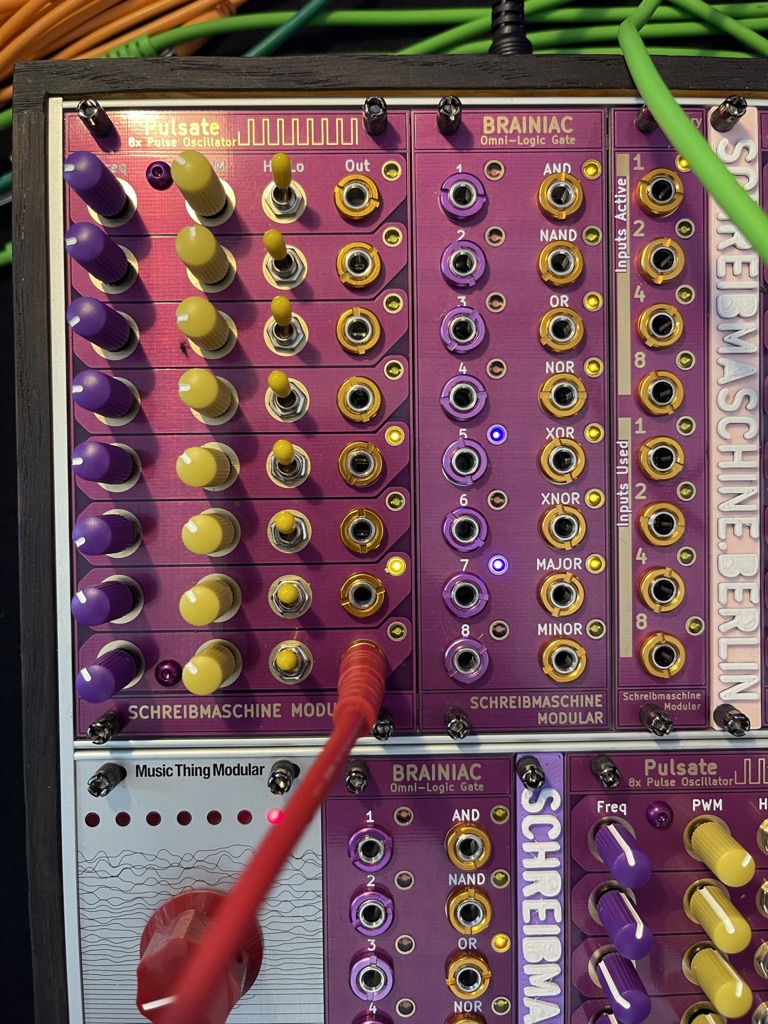

Schreibmaschine opens up DIY and logic patching in wonderful ways. This is my personal favorite modular lineup of the show. Both the name of the modular line and the artist, Schreibmaschine has a line of wonderfully inventive modules and a set of tools for developing your own DIY projects. There are smart, useful logic gates – again, for elaborating intricate compositions with signal and making the modular environment really sing. Best of all, the Brainiac logic gate and new Pulsate module (a bank of PWM oscillators) all work directly with Music Thing Modular’s Turing Machine standard. Put the modules together in a rack, and wonderful things happen as Schreibmaschine’s modules expand everything you can do with the Turing Machine.
As if that weren’t enough, they’ve also built a bunch of prototyping tools that are the spiritual successor to Mutable Instruments’ offerings – with extra power and expansion flexibility.
Oh, and I love the grape color. More on this soon.

Neuzeit Instruments won the most buzz for its 3D panner. Quasar just looks the part – while there were other digital mixers around, those giant knobs and brilliant blue bolts launch this thing right on the spatial audio hype rocket. It’s just a prototype, but it gives you CV control of 3D parameters and binaural output. (Curious about the encoder they’re using but will follow up later.)
Check the video for a sound demo. Their existing Orbit module is also lovely – bitcrusher, harmonizer, multimode filter (with fade between LP/HP), envelope generator, mixer, and VCAs all in one. https://www.neuzeit-instruments.com/

Befaco goes noise. Noise Plethora is one wonderfully overdesigned noise source.
(updated!) Der Mann mit Der Maschine is the artist-performer and controller maker – and they one-upped the game with motorized faders. All the stuff from Der Mann mit Der Maschine is great, but the motorized faders here were a big hit of the show. And while the costs add up a bit in this format, the modular approach here means a chance to build your own controller in Eurorack.
Planet drum
So many drum modules. Okay, some of these were new, some weren’t but were just fabulous to play – the Rabid Elephant Portal Drum is just wonderful, for instance. (2019 Superbooth news, but here’s a video from the last 24 hours, so hope you’re happy.) Correction: Not “Radio Elephant,” which is something else. I just have a natural animal hospital effect on things; if I see an elephant with rabies, I provide the cure. Mea culpa. Check their beautiful music, too.
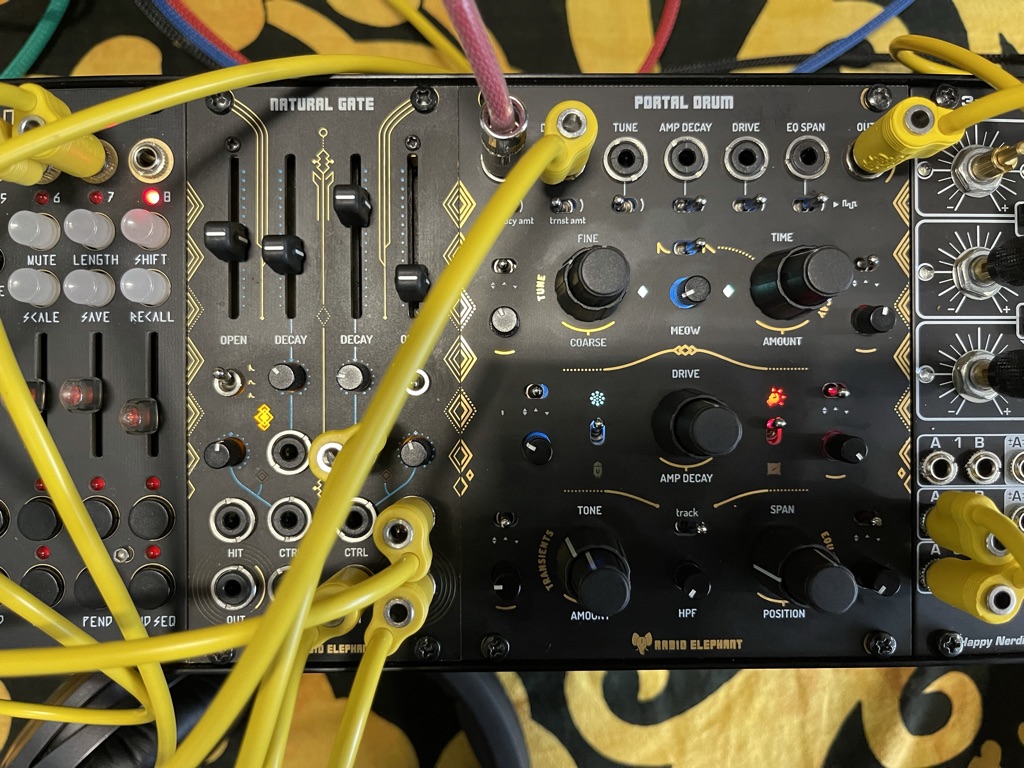
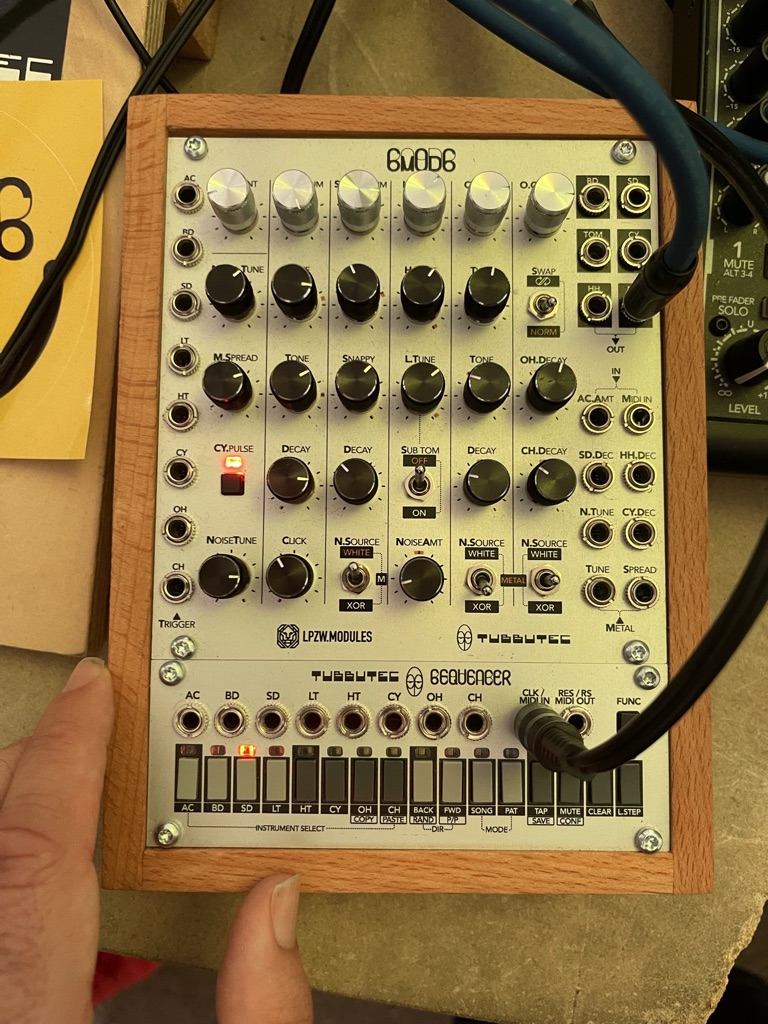
Tubbutec and LPZW made a tiny 606-inspired module. Those 606-ish sounds fit perfectly in the form factor and are ideal for some CV control. 509.24 € before VAT. 350G. I like this little step sequencer, too (not new).
And then there’s the much talked-about ZAPS – analog voice (courtesy Plankton Electronics) with digital control (Winter Modular) and Miguel Angel Martínez’ UI design.
I think any of these three you could plop in a suitcase rig and … forego the rest of the modular, just about. Radio Elephant’s stuff most fits my personality, but choose your flavor.
Or get a nice compact FM drum module instead, also new this month.
Best of show
Creations that made an impression, and made their own category…
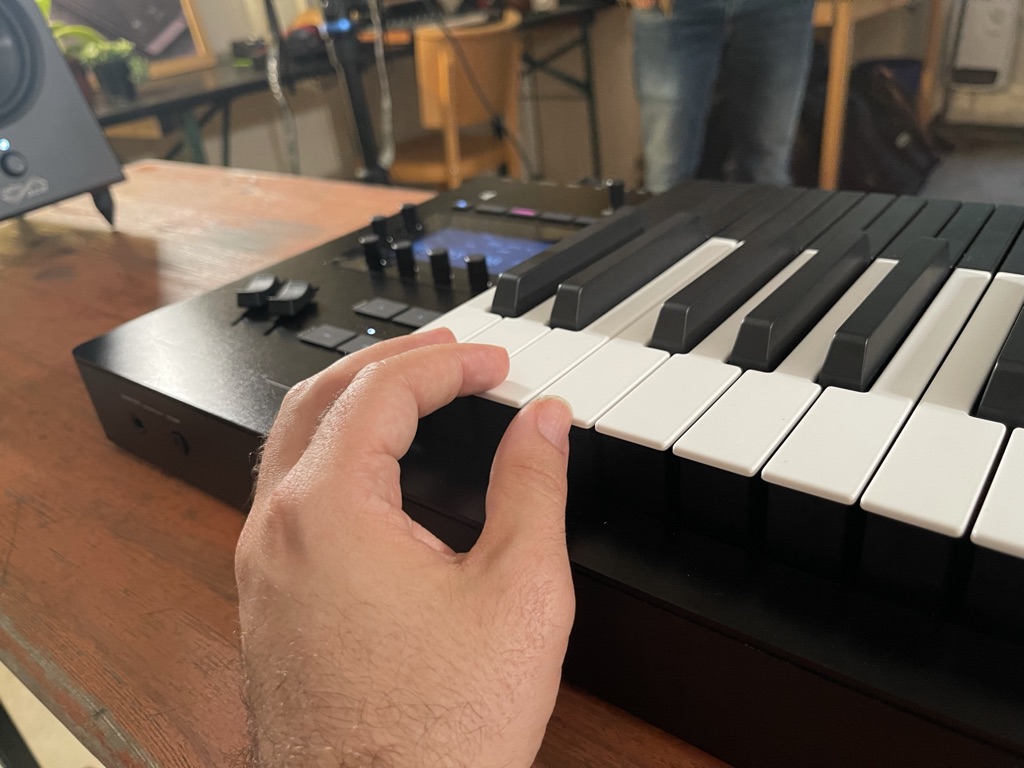
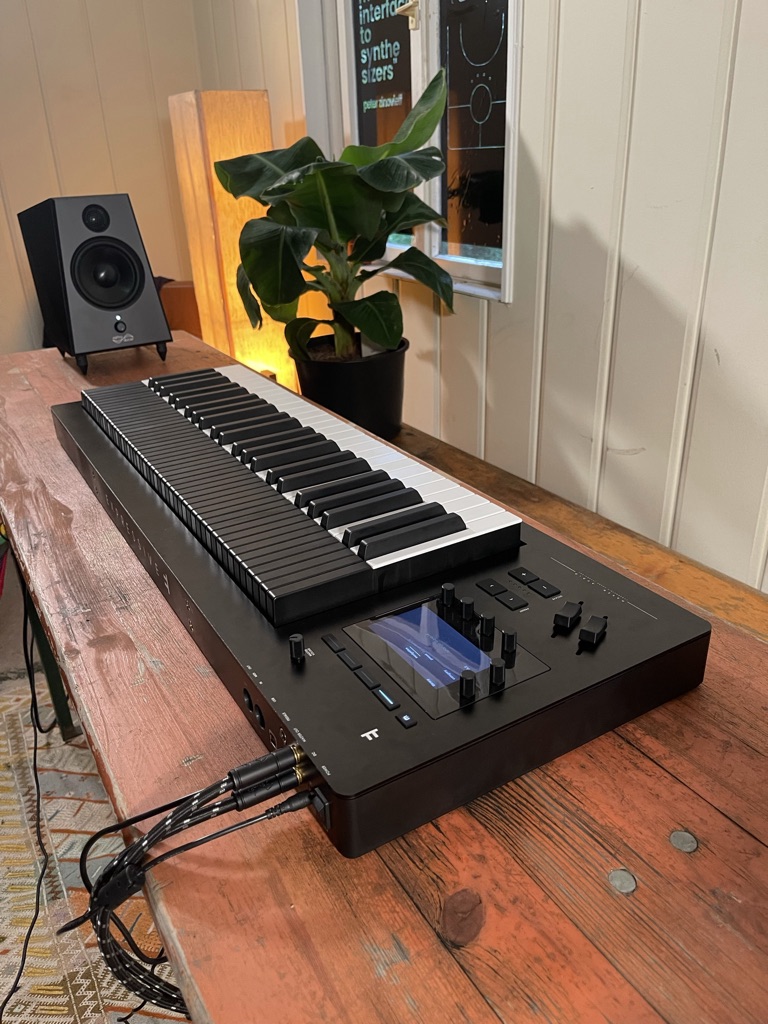
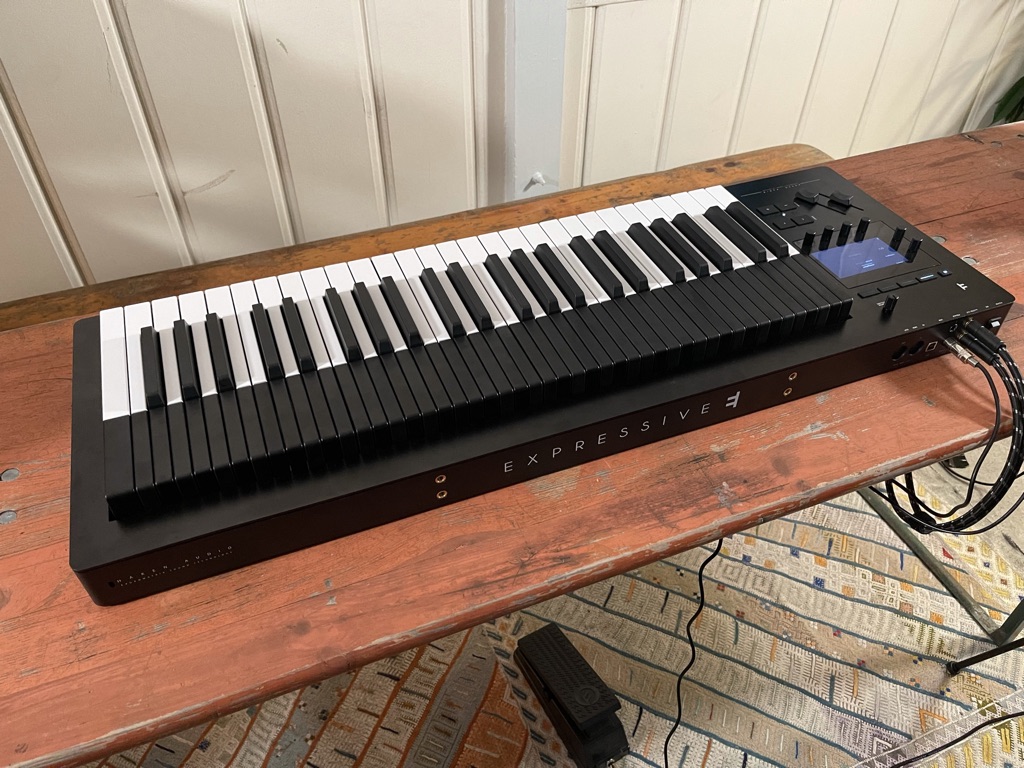
Expressive E’s Osmose keyboard might finally nail the alternative-keyboard design. This notion of how to extend the piano – with keys you can wiggle around or press further for added expression – have been around in various forms for a while, some even predating electronics. But the Osmose is getting there. The advantage of the hammer action is that you can get your fingers around the added possibilities. My sense from a few minutes on it is that skilled pianists, with the mechanical training of their hand and how they use weight, might actually be better mastering some of the nuances it offers, even though they run counter to that same training. (I recall my own piano teacher working endlessly with me on how to deal with the weight of my hand after the keys were depressed, even though normally this makes no sound.)
Osmose benefits from Haken’s sound engine, the sound source developed for the Continuum – a controller that uses a long pliable strip as its input, which helped create this whole category. That engine also found its way into Eurorack form this month. (Expression E were also touting a new software instrument powered by AAS, the physical modeling experts, though perversely that one doesn’t support expressive input. I’ll deal with it separately.)
All in all, this is one to watch – and easily bests the more-hyped entries from troubled ROLI, now Luminary. If you do want a piano keyboard, I suspect this is the one with the most potential. If you want continuous control or a grid, that’s something else.
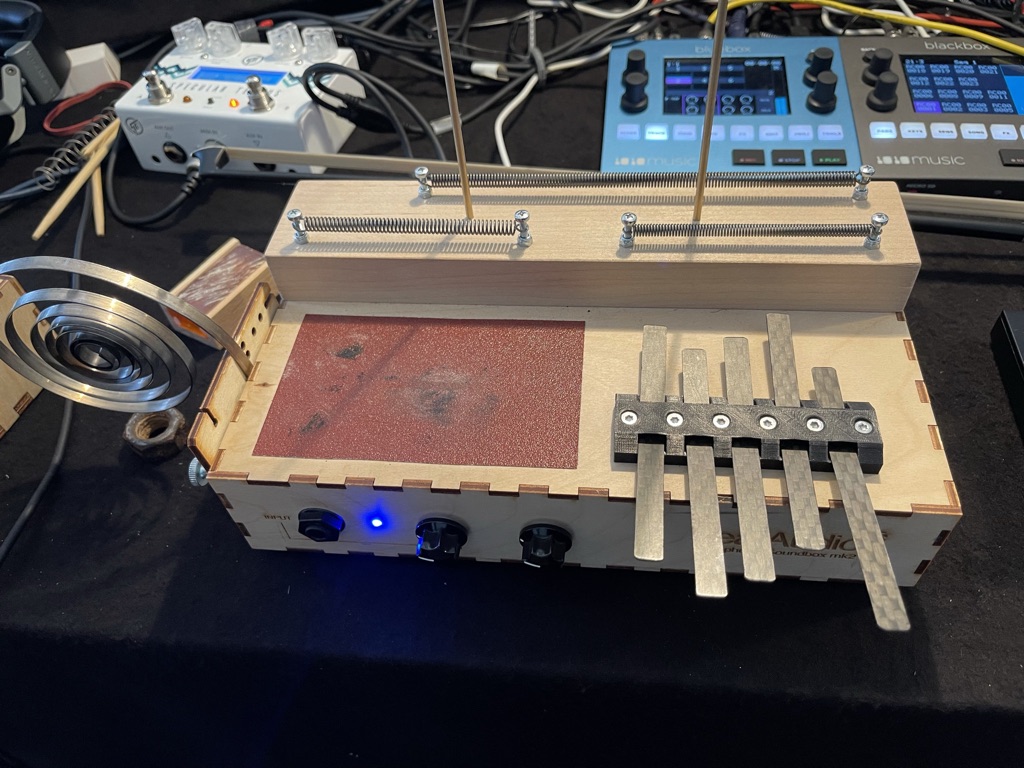
DIY was everywhere, and Leaf Audio showed off wonderful sounds with contact mics. There was such a hunger for soldering that the workshops sprawled into Sunday into a separate DIY event atop a rooftop venue overlooking the Berlin skyline. Leaf Audio specializes in such workshops, and this kit with contact mics and pickups made surprisingly subtle and beautiful sounds.
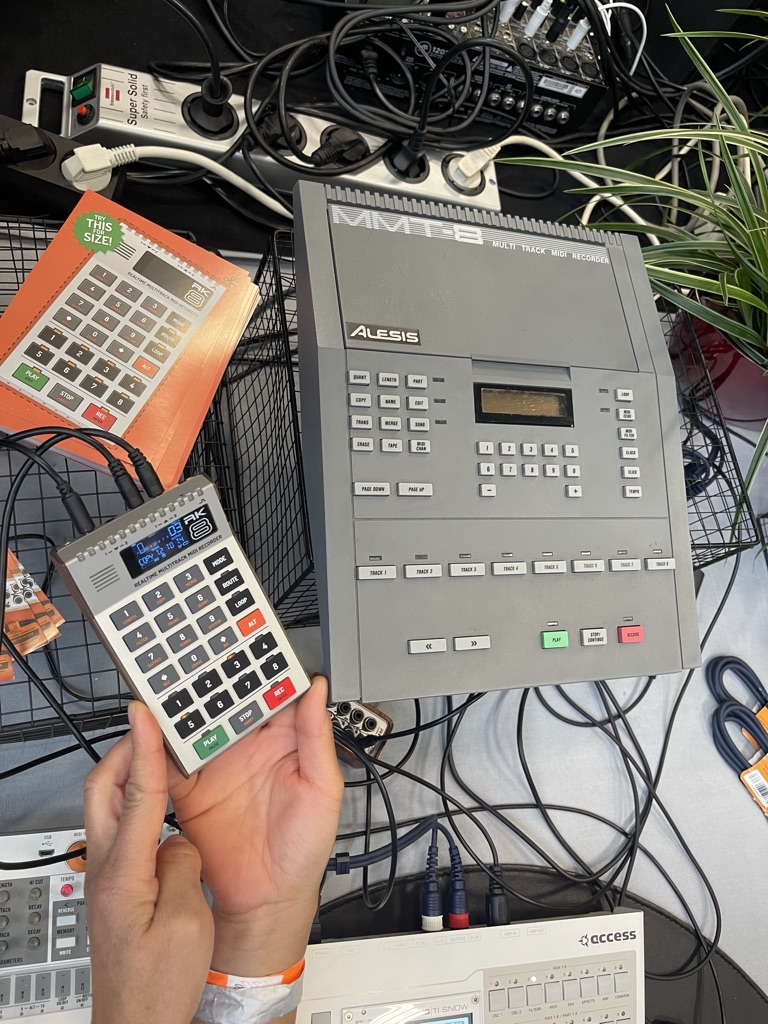
Retrokit’s RK-008 is even cuter in person. This tiny sequencer might be the must-have of 2021. More on it separately. See our preview:
embodme Erae Touch is like the ROLI Blocks but – bigger and more versatile and not made by ROLI/Luminary. I mean, that says it all. You get an MPE-supporting controller with LEDs underneath, just like ROLI’s. But the sensing here appears to be more precise, and it’s spread over an area that’s actually large enough to use. (I normally like small things, but ROLI Blocks were so tiny as to sort of defeat the purpose.) Plus you can hit these with drum sticks. With 18″ size and tons of modes (fader, arpeggiator, isometric pitch layout, xyz pad, keyboard, sequencer – the usual monome-/Tenori-On-inspired stuff), it looks terrific. And it even does MIDI 2.0, not that that really matters yet. 850EUR, but looks serious.
I forgot to take a photo, but here’s SynthAnatomy –
And more info on their site:
Best of desktop
Erica has a hit on their hands. I’ve said enough about this one, but here it is again – and I know from social media no one could take their hands off of it. (Plus a surprise about that shortly.) What CDM readers should know is that a comment about everyone at Erica Synths wearing black prompted Eliza from the company to show up in a blue tracksuit matching the instrument.
Previously:
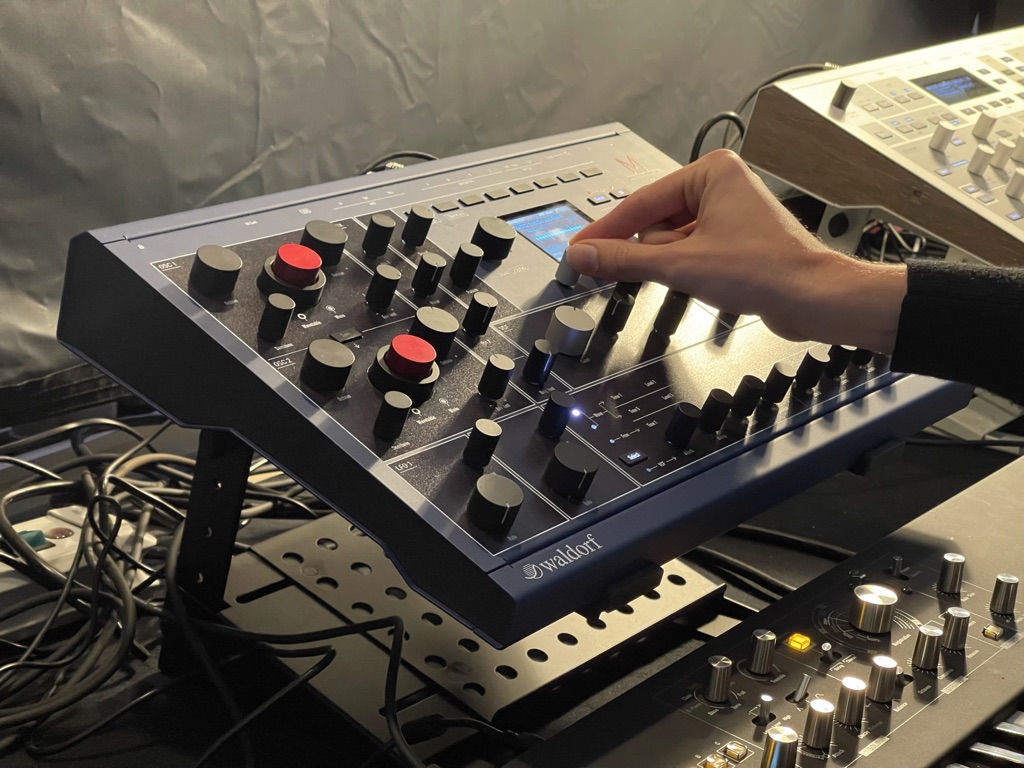
Waldorf M was an instant hit. This might win the nomination for “Superbooth gear folks would most like to steal,” packing a whole lot of Waldorf’s wavetable legacy.
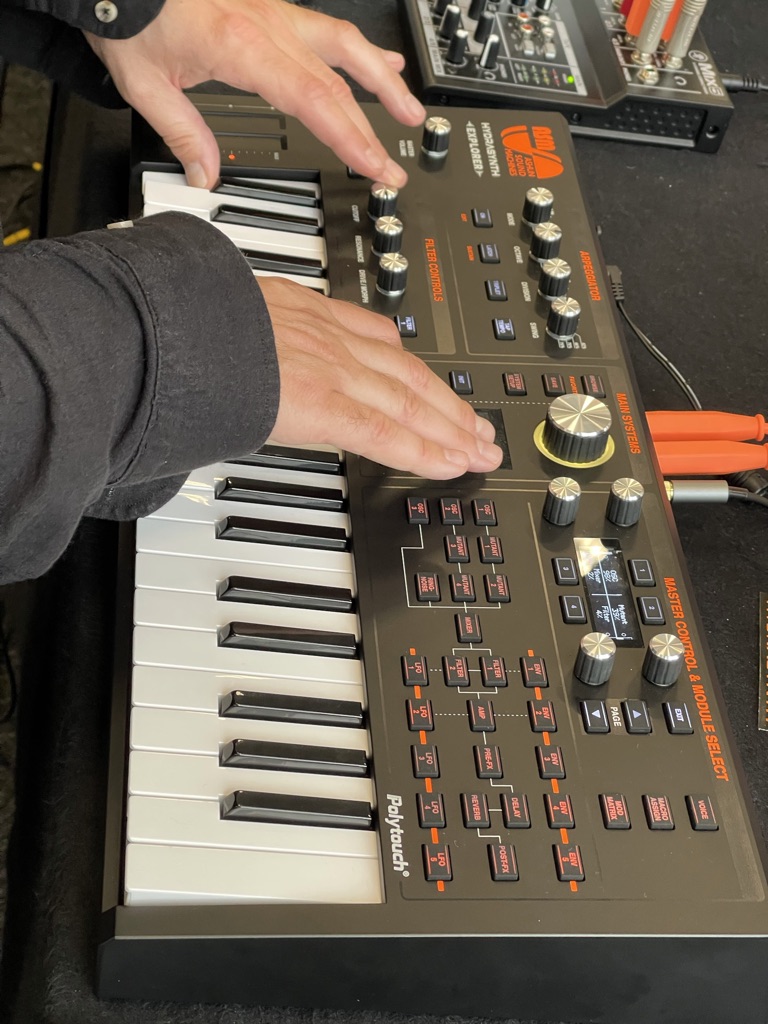
ASM are making expressive synths affordable. Look out industry – crazy as it is, yes, this is a minikey (technically “mid-sized key”) instrument with MPE (MIDI Polyphonic Expression). But they’ve pulled it off. And as ASM continues to aggressively pack features-per-dollar/rouble/whatever you’ve got, it proves it’s possible to create original architectures for deep sound design without spending a ton of money.
It’s a little unfair, actually, putting ASM up against the independent makers, but no matter – I still think you’ll choose on personality. But ASM’s team, led by veteran Glen Darcey, really impress. And this – alongside all these wild indie entries – proves that we’re not in a race-to-the-bottom, clone-everything synth world after all.
Wait, all this wavetable business isn’t what you want sound-wise? Well….
Don’t forget Sequential also have their Take 5. Was fun watching tire kickers get lost on these two keyboards. Good thing COVID-19 rules meant time limits on booths.
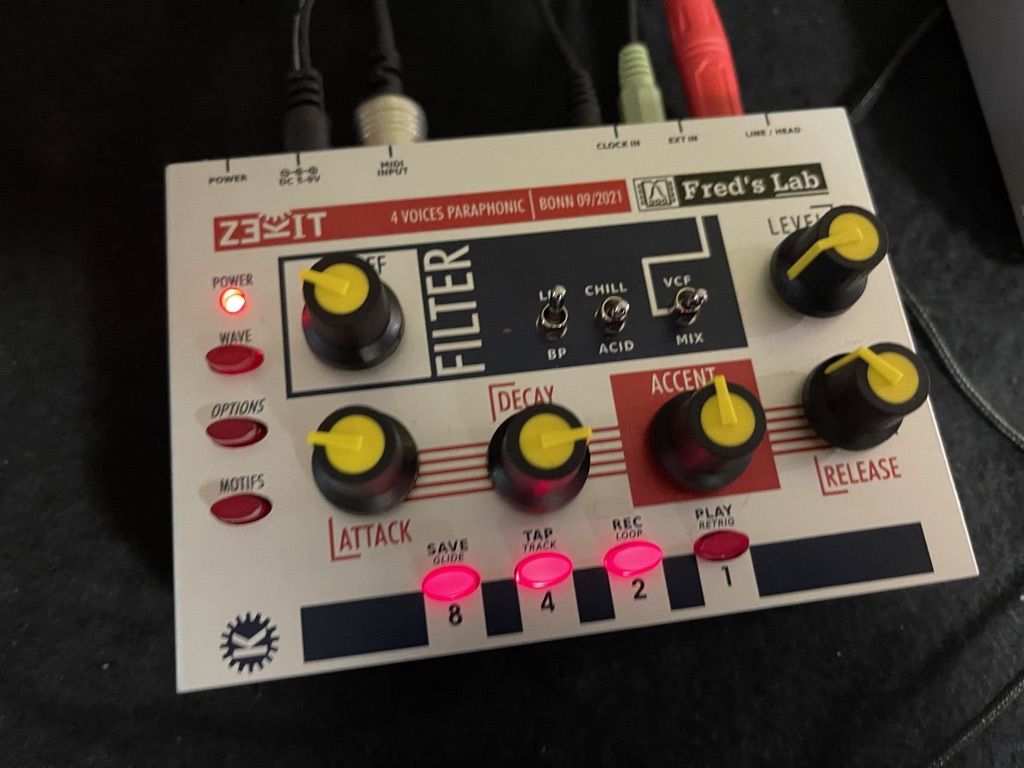
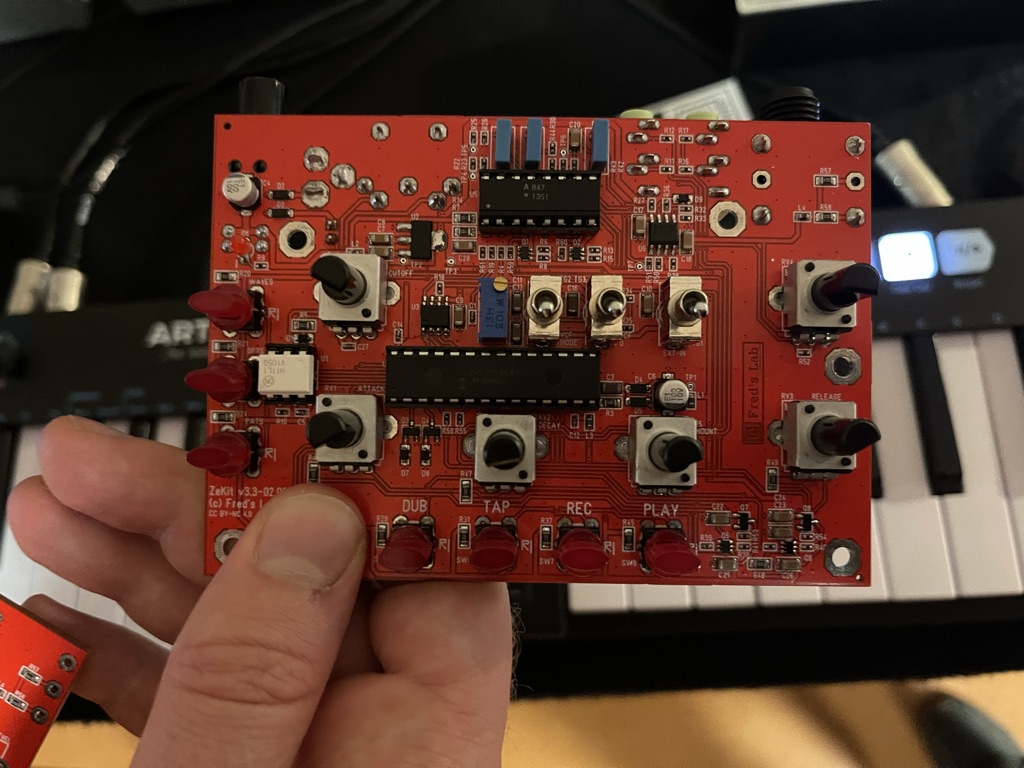
Fred’s Lab has some overlooked gems of synths. If sticker shock has you on a lot of the rest of this show, there are always sanctuaries like the ingenious Fred’s Lab stuff. Töörö is a deep 6-voice, 4-part “digilog” poly, though it means getting your head around a bunch of button presses since it has just four encoders.
The ZeKit to me, though, was the star – a 4-voice paraphonic synth with step sequencer, multiple waveforms, and lots of easy performance features that make it fun to jam with, all starting at 129 EUR for the unassembled kit and only a little more to have it built for you.
Sure, the filter lacks a resonance knob, but the chill/acid switch is fun. Plus it was impossibly simple to punch in a melody and then mess around with it and recall presets and waveform variations – all perfect for live use.
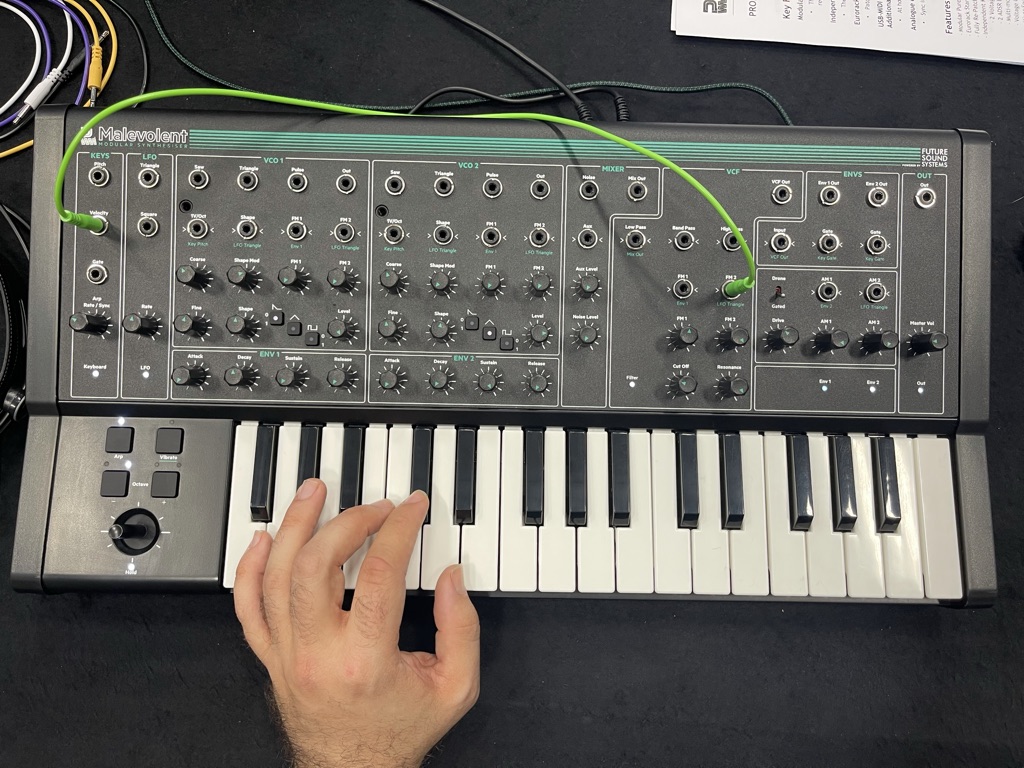

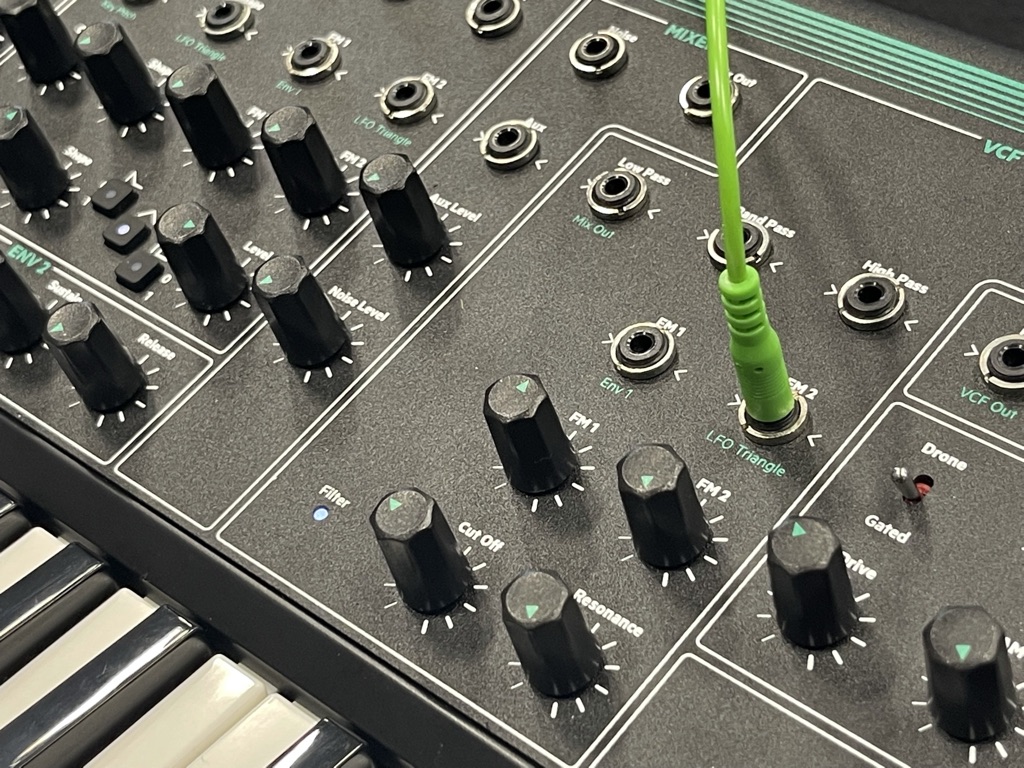
PWM Malevolent is a complete patchable monosynth from a brand-new vendor. This one also got a ton of buzz – portable, minikey, all-analog signal path, and a whopping 19 outputs and 19 inputs for Eurorack-compatible patching, for 579.99EUR including VAT. The industrial design is really smart, and you get onboard FM and lots of performance features. I love that there’s a drone switch, too.
I’ll say, though, this was the one disappointment of the show for me. Basically, because they went full-analog subtractive, you wind up comparing the sound with (gulp) Moog. And the problem is, the sound of even the far cheaper Werkstatt is more interesting to play with than this (and with its expander even as patchable).
Conceptually, it’s great, and you should still have a look as it may fit a niche for you. But personally, I wish I could have a love child of the Malevolent’s form factor with the sound engine in the Arturia MicroFreak (which actually could benefit from a physical patch bay – you see my point).
This feels somehow like the Holga camera of analog synths. Though… wait, this thing I don’t like could for the same reason become amazing in someone else’s hands in the same way. I won’t stop you.
Dreadbox’s Nymphes looks really beautiful and compact. I … feel slightly like I already own it, in that I do have the Polyend Medusa, and what play I had on the Nymphes made it sound like the Medusa, and they have similar architectures. But then if I like the Medusa’s multiple personality – grid, analog synth, digital synth, digital control, analog fader and encoder control – I can absolutely see folks wanting some lush Dreadbox analog sounds in a more concise form.
Dreadbox is special, too, in that its stuff feels vintage – not as in a recreation of something vintage, but like a piece of used gear you got from an alternate timeline. And 499EUR including VAT means a very competitive price for a 6-voice instrument with its own very beautiful custom digital reverb, tons of envelopes and LFOs, and metal enclosure.
Best of the depths
Lastly, some of the more leftfield inventions of the show…
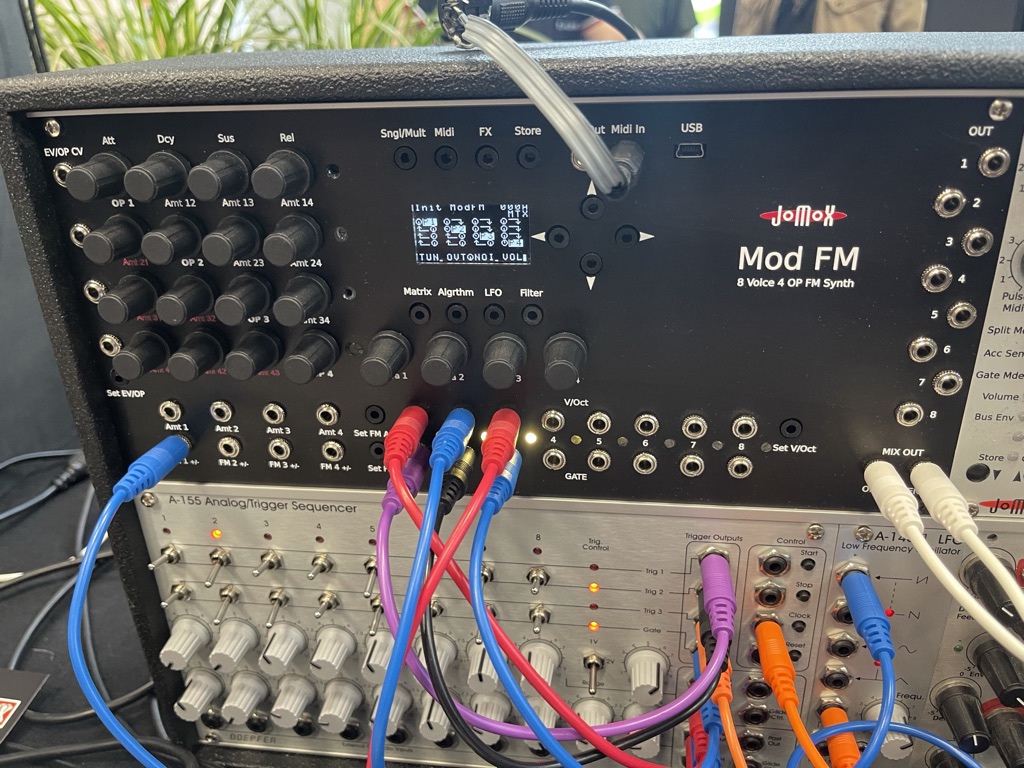
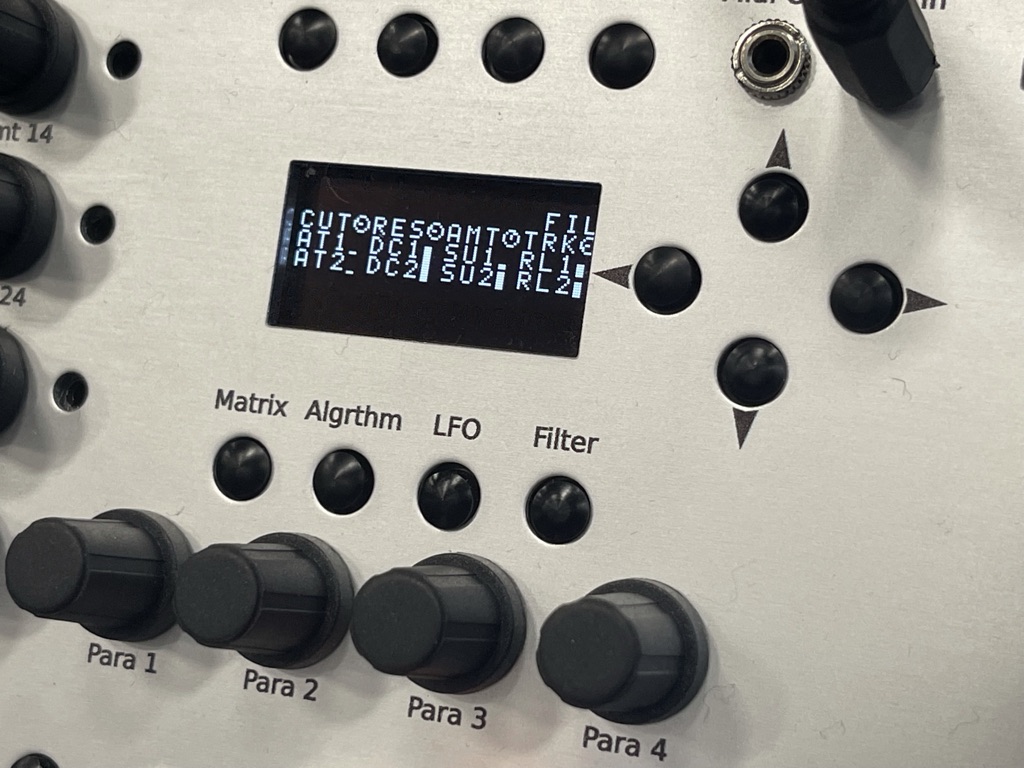
Berlin’s own Jomox showed off a new FM module. All those encoders and CV patching make for a deep instrument on its own – even if I then long for a desktop version. (The large empty space on the panel is due to the design’s internals – well, Jomox is used to making fairly large things.)
Aodyo Instruments Anyma Phi is a new physical modeling synth. Of course this came from France. It feels a bit like 2021’s VL1 – a deep desktop instrument with both acoustic models and physical models and tons of control. Of course, it has to compete with a Mac mini running plug-ins like Apple’s own Sculpture, but it’s some nice stuff nonetheless.
Schmidt are still doing the synth that ate Berlin. This giant instrument has become something of its own pilgrimage inside Superbooth, an epic-sized project with an epic-sized form factor. Even my wide-angle lens almost makes it look smaller than it is.
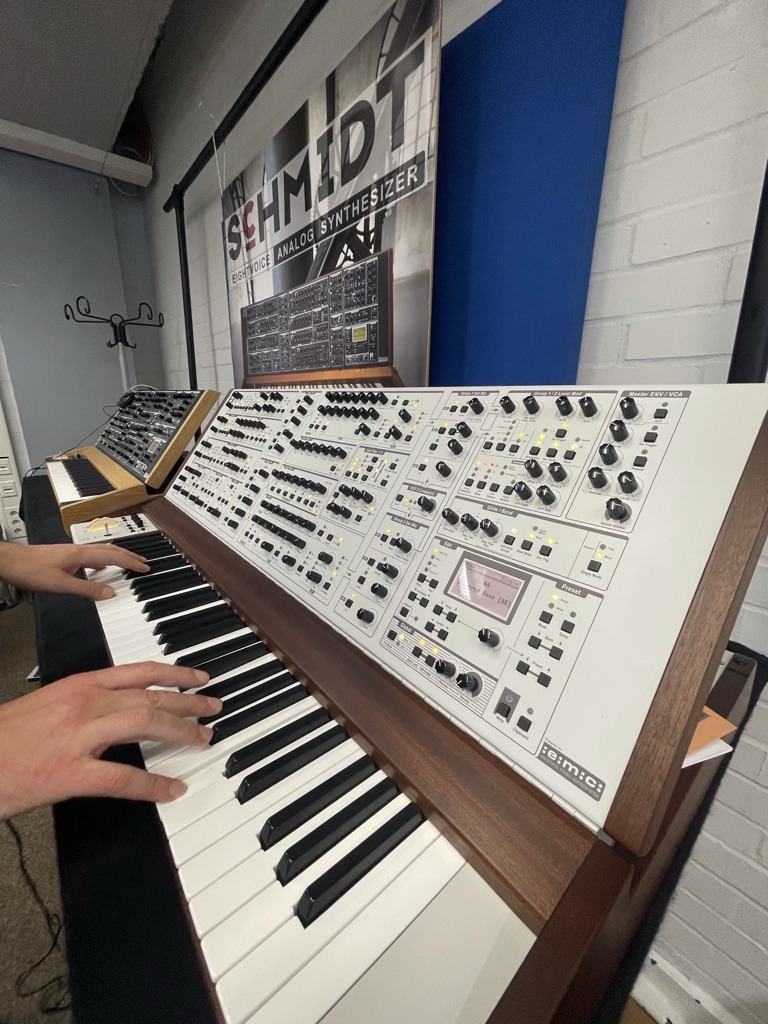
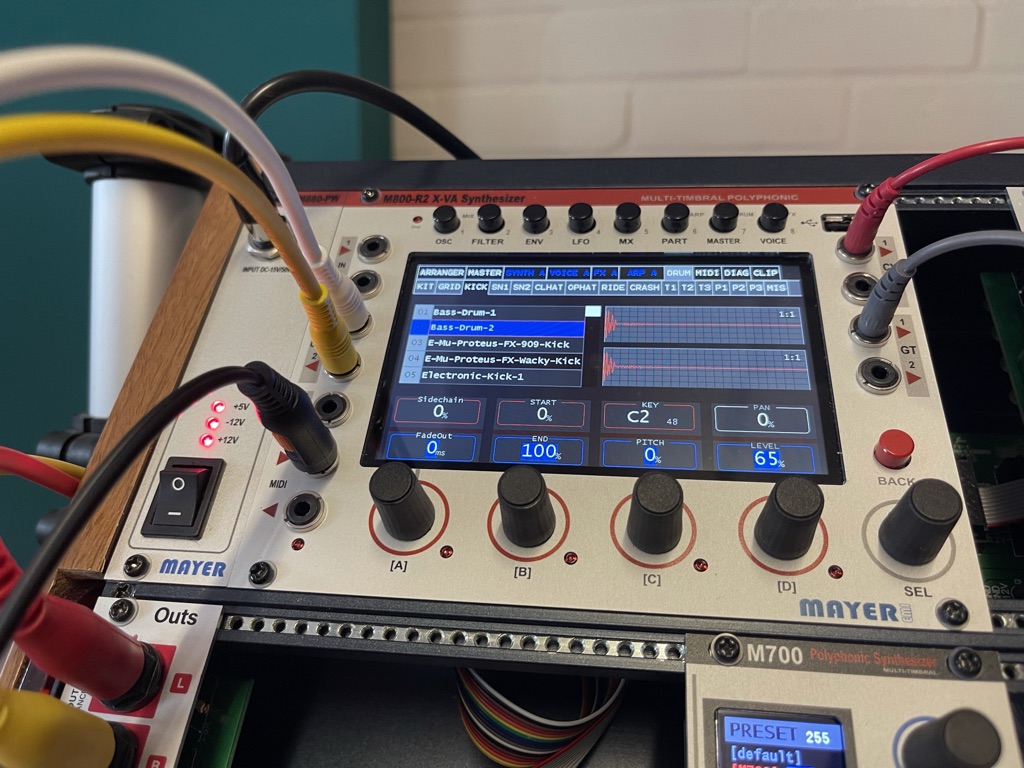
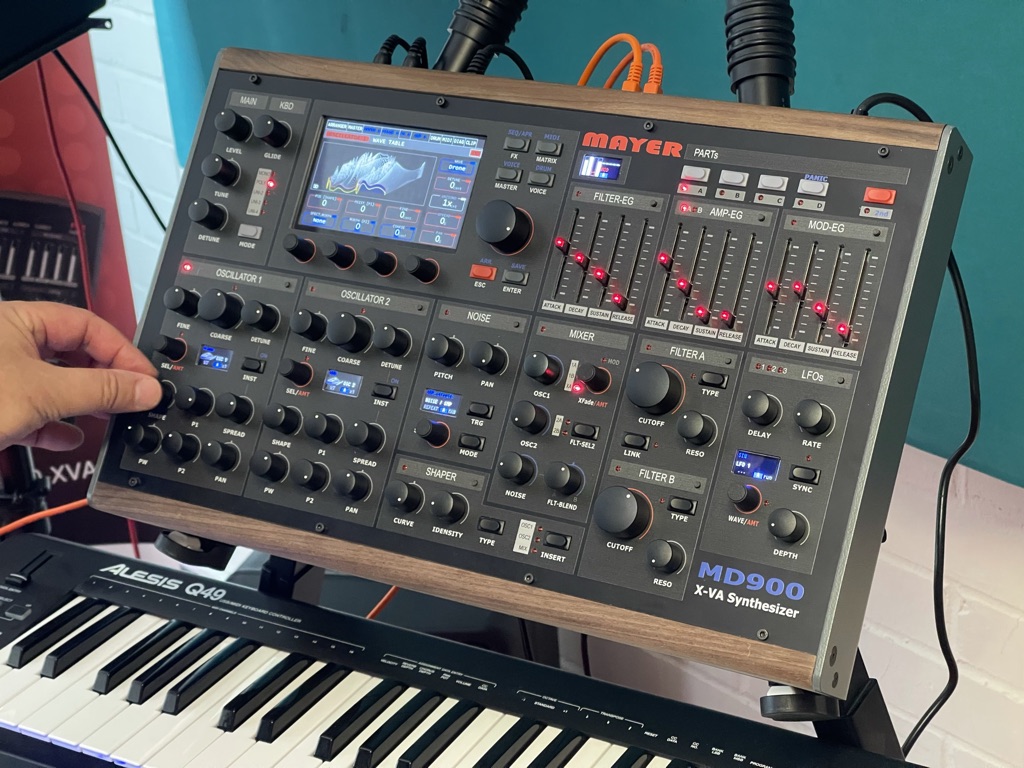
Mayer’s MD900 was a beast – a 16-voice, 4-part multitimbral desktop workstation made by a small builder from Austria, all running (impossibly) on a Raspberry Pi core. (What, seriously?) It does wavetable oscillators, it has a mixer, there are drum instruments, there’s a Clip Launcher (yeah, like in Ableton Live), there’s an arp and effects and it just sort of goes on and on. Spectral morphing? Mod matrix? They crammed the same engine into a Eurorack module, too.
It’ll be expensive, but if it’s too rich for your blood, this vendor is just as interesting for its smaller options and DIY tools.


Faselunare of Italy – connected to Soundmit, Italy’s own synth fair – was showing its essential open tools, both an excellent new drum module and the deep Microcosmos board. Exciting potential here, even as they also deal with this year’s brutal chip shortage. Think Teensy-powered open hardware you can learn to code on – and just as easily use as a deep, affordable instrument of your own.
More on all of this soon.
Did I miss anything important? Sound off in comments.
